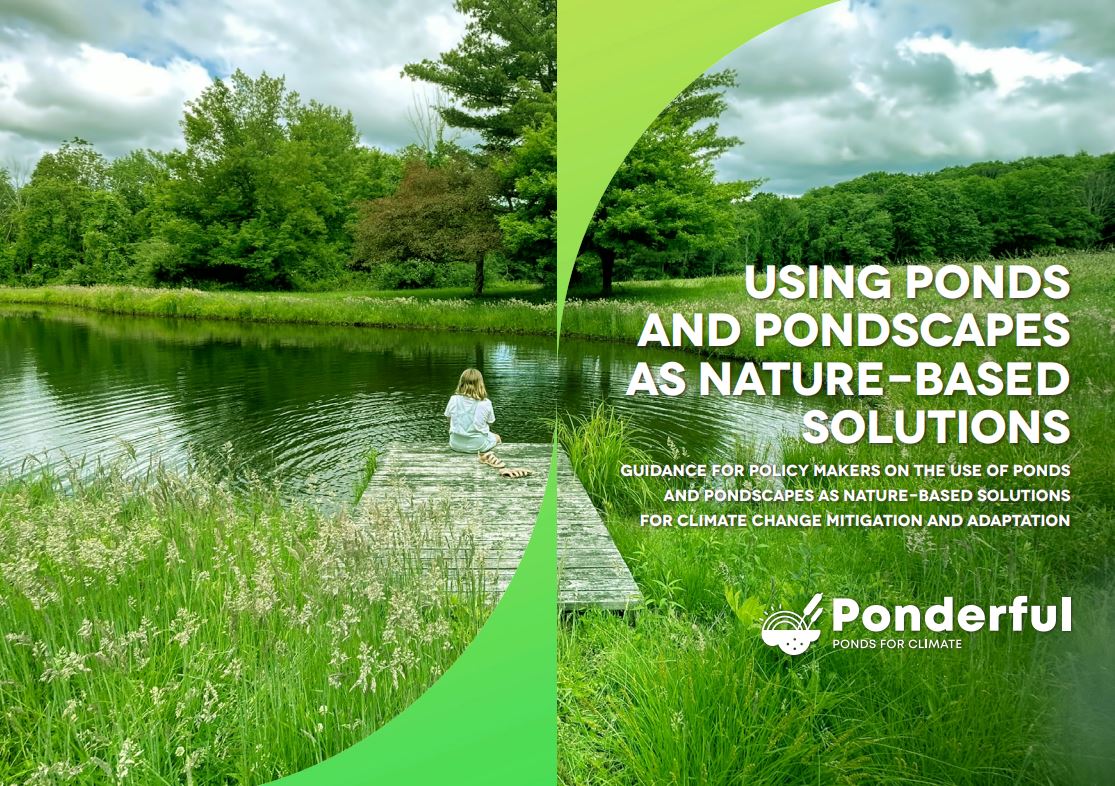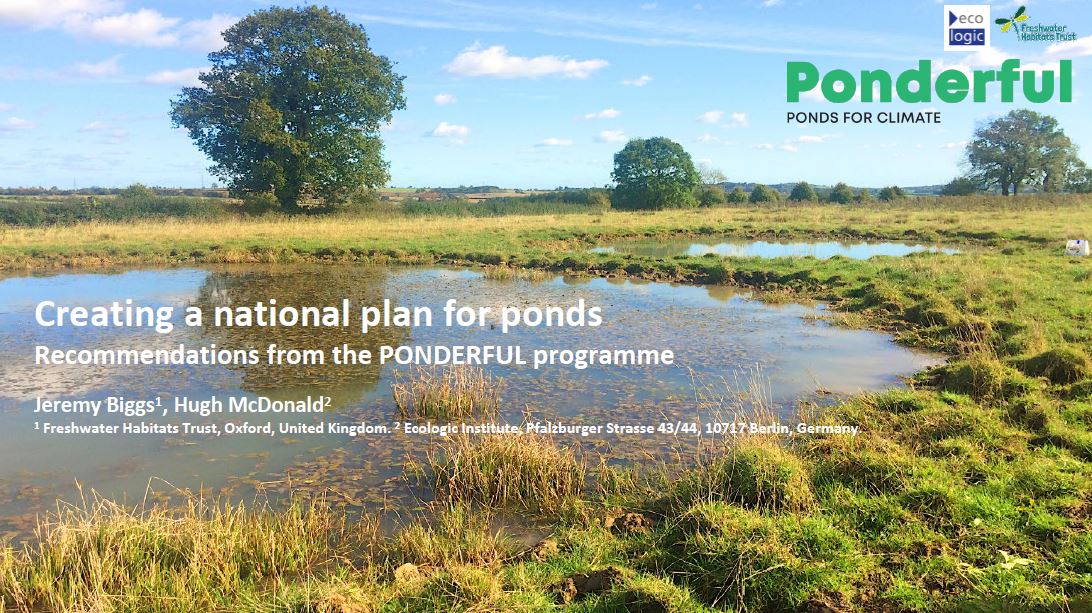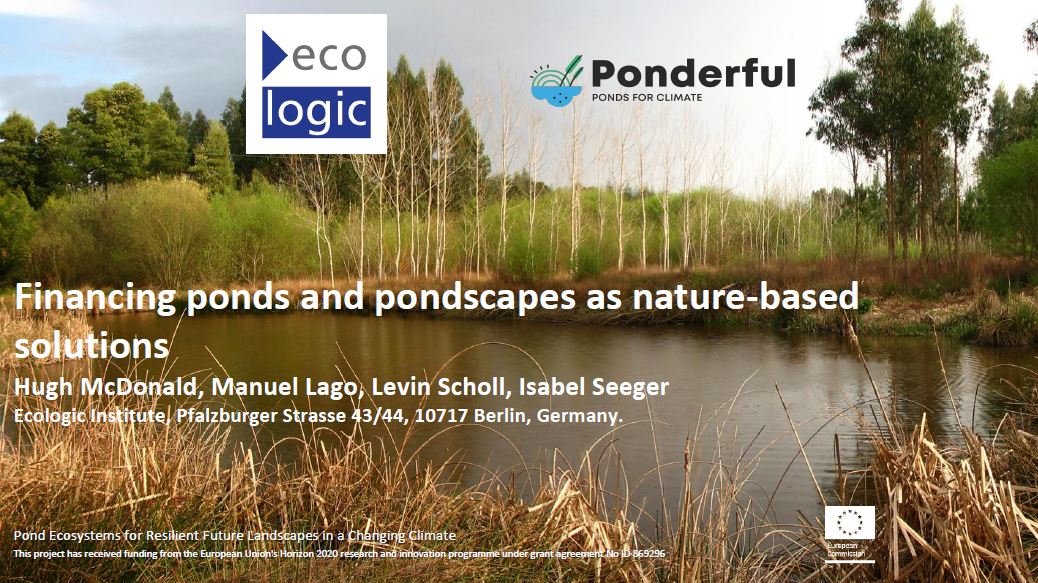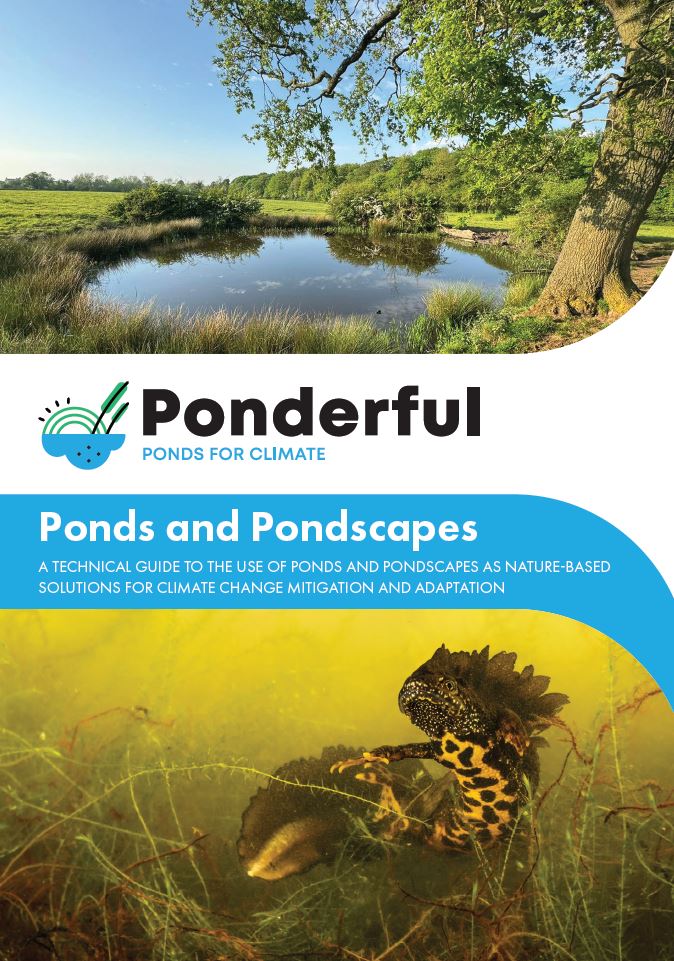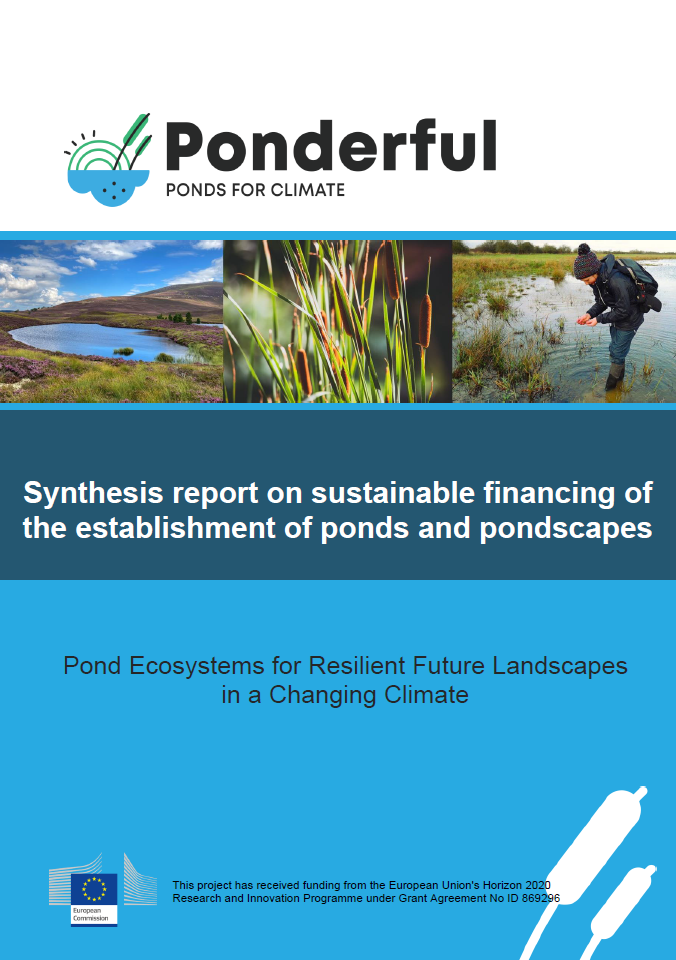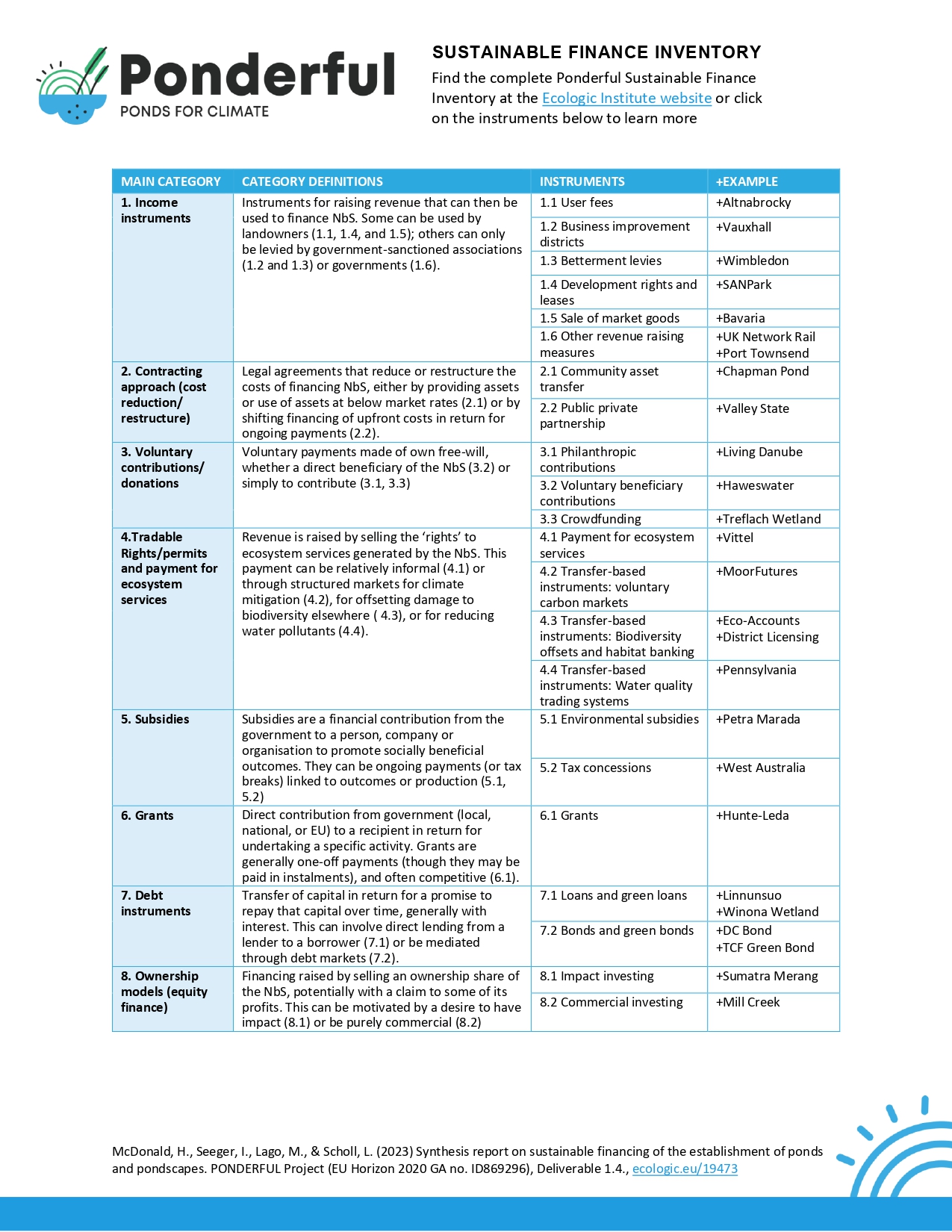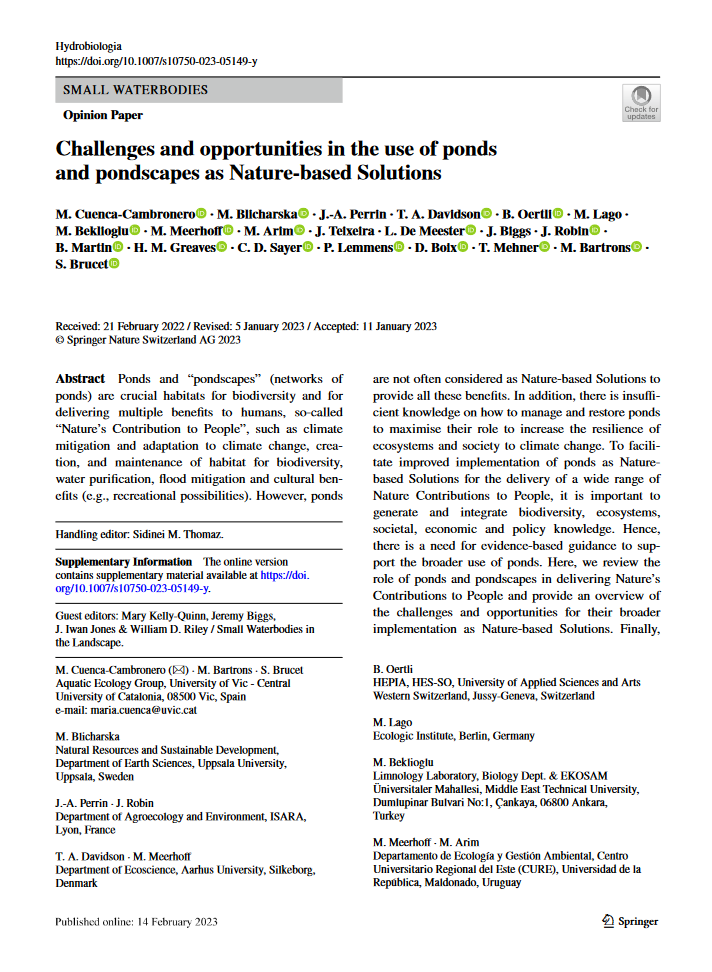Using Ponds and Pondscapes as Nature-based Solutions
Guidance for policy makers
- Publication
- Citation
Biggs, J., Hoyle, Matos, I., Oertli, B., Teixeira, J. (2024). Using ponds and pondscapes as nature-based solutions. Guidance for policy makers on the use of ponds and pondscapes as nature-based solutions for climate change mitigation and adaptation, EU Horizon 2020 Ponderful project, University of Vic – Central University of Catalonia. https://doi.org/10.5281/zenodo.13847395
The recently published guide "Using ponds and pondscapes as nature-based solutions" is a practical guide for policy makers. The guide provides detailed recommendations on using ponds and pondscapes as nature-based solutions, in particular to adapt to climate change and promote biodiversity. In addition to the policy dimension, it contains practical suggestions for monitoring, management and restoration of ponds.
New findings on the function of ponds
The guide emphasizes that despite their small size, ponds make an enormous contribution to ecological stability. They contain up to 30% of the world's standing water and provide habitats for numerous endangered species. An important new finding is that ponds can contribute significantly to the regulation of the carbon cycle through their high biogeochemical activity. It also shows how ponds can mitigate extreme events such as floods and droughts while providing habitat for pollinators and other keystone species.
Practical suggestions for monitoring, management and restoration
The authors present detailed approaches for practical work with ponds to maintain or restore their ecological and social functions. For monitoring, it is recommended to conduct regular inventories that include physico-chemical water quality and biological parameters such as species diversity. Such data makes it possible to evaluate and adapt the effectiveness of measures. In the area of management, the importance of protecting ponds from nutrient pollution, controlling invasive species and establishing buffer zones of semi-natural vegetation is emphasized. For restoration, the concept of "ghost ponds" (restoring formerly infilled ponds) offers an innovative solution to revitalize historic water networks. These measures are not only ecologically valuable, but also comparatively cost-effective compared to technical alternatives.
Recommendations and future prospects
A key message from the authors is that ponds should be more fully integrated into policy planning. Nine concrete measures are proposed, including the improvement of water quality through buffer zones, the promotion of ponds in urban areas and the creation of national pond inventories. A new suggestion is the introduction of an international agreement specifically for the protection of ponds and pond landscapes, in order to strengthen their ecological and social importance globally.
The PONDERFUL project at a glance
The guide is a result of the PONDERFUL project, which has developed innovative approaches to the use of ponds. It is based on extensive research and offers both scientific and practical perspectives, which are further elaborated in a complementary technical handbook. The aim is to equip policy and practitioners with the necessary tools to promote ponds as valuable nature-based solutions.
